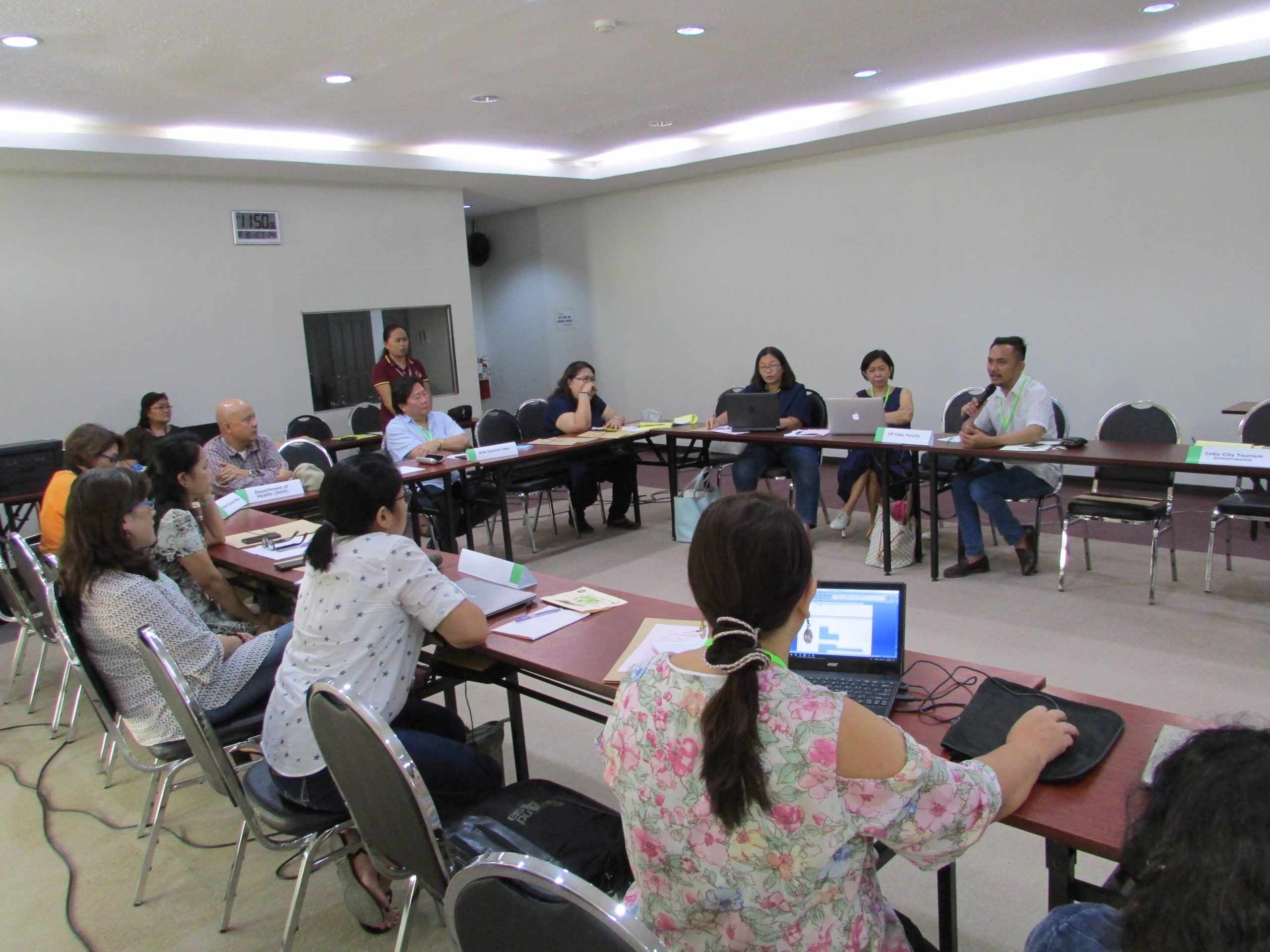CVSC History
Originally, CVSC implemented three major programs: the Cultural and Historical Heritage Program, the Cebuano Language and Culture Program, and the Faculty Research Program.
Under the Cultural and Historical Heritage Program, CVSC spearheaded a series of Local Heritage Fora and Local History Writing Workshops across Cebu’s towns, including Alcoy, Argao, Bantayan, Boljoon, Carcar, Dalaguete, Oslob, and Sibonga. These initiatives not only revitalized interest in local history but also inspired the creation of cultural festivals—such as Carcar’s Kabkaban Festival—and the revival of traditional practices like the Rigodon de Honor.
In collaboration with the Ramon Aboitiz Foundation, Inc. (RAFI), CVSC introduced cultural and heritage mappingas a method for documenting barangay histories in southeastern Cebu. It also organized events that celebrated Cebuano heritage and creativity, including the Daygon (Christmas carol) revival contest, the Pasidungog ni Minggoy Lopezconcert, and academic conferences such as the Visayas Conference on the Philippine-American War and the 23rd National Conference on Local and National History. Its newsletter, Lahutay (“to persevere”), chronicled local cultural and historical research.
The Central Visayas Studies Center (CVSC) was established as part of the University of the Philippines’ system-wide network of regional studies programs, officially approved during the 1131st Board of Regents meeting in May 1999. It was envisioned as UP Cebu’s multidisciplinary resource center—harnessing the expertise of its faculty to deepen understanding of regional issues through a holistic and research-driven approach.
At the heart of its founding was Dr. Madrileña de la Cerna, the Center’s first director, whose pioneering work in culture-centered research and heritage mapping laid the foundation for CVSC’s enduring commitment to preserving and promoting Central Visayas’ cultural and historical identity. Her leadership was pivotal in shaping the Center’s early directions and community-based research practices that continue to influence its initiatives today.
In 2004, CVSC expanded its scope through the Cebuano Language and Culture Program, which sought to popularize and intellectualize the Cebuano language. With the support of then UP President Dr. Francisco Nemenzo, the Board of Regents approved the program on 20 October 2004. Among its outputs were lecture series and writing clinics that culminated in Sulat Dula (Cebuano playwriting contest) and the production Tulo Tulo sa Marso, advancing the use of Cebuano as a medium for creative and scholarly expression.
Through its Faculty Research Program, CVSC supported studies on Cebuano history, culture, and language. Following the granting of UP Cebu’s autonomy in 2010 (BOR 1260th meeting), CVSC evolved into the official research office of UP Cebu. It now plays a central role in developing the university’s research agenda, facilitating interdisciplinary projects, strengthening research capability, maintaining databases and publications, and fostering collaborations across academic, government, and community sectors.

